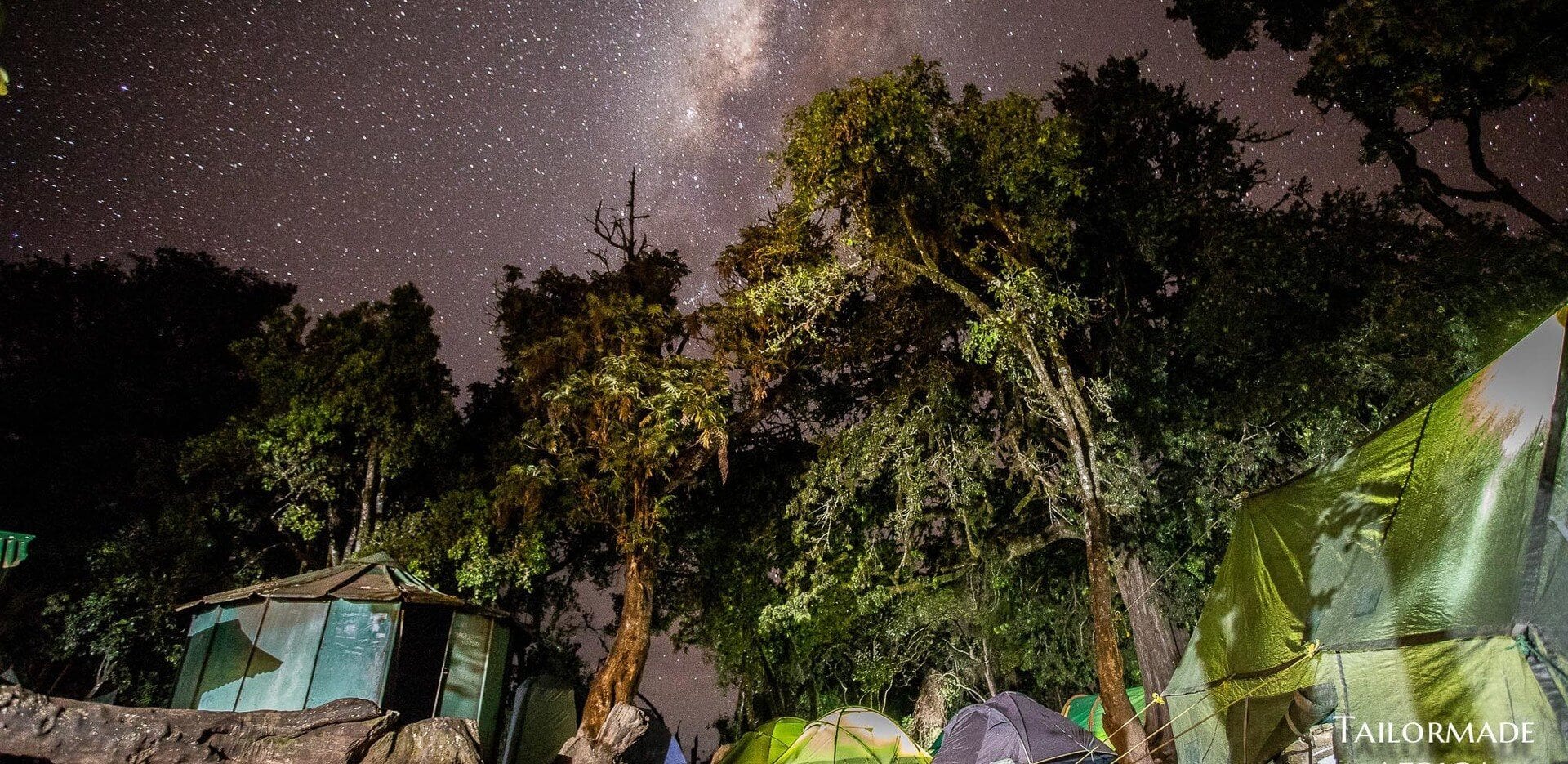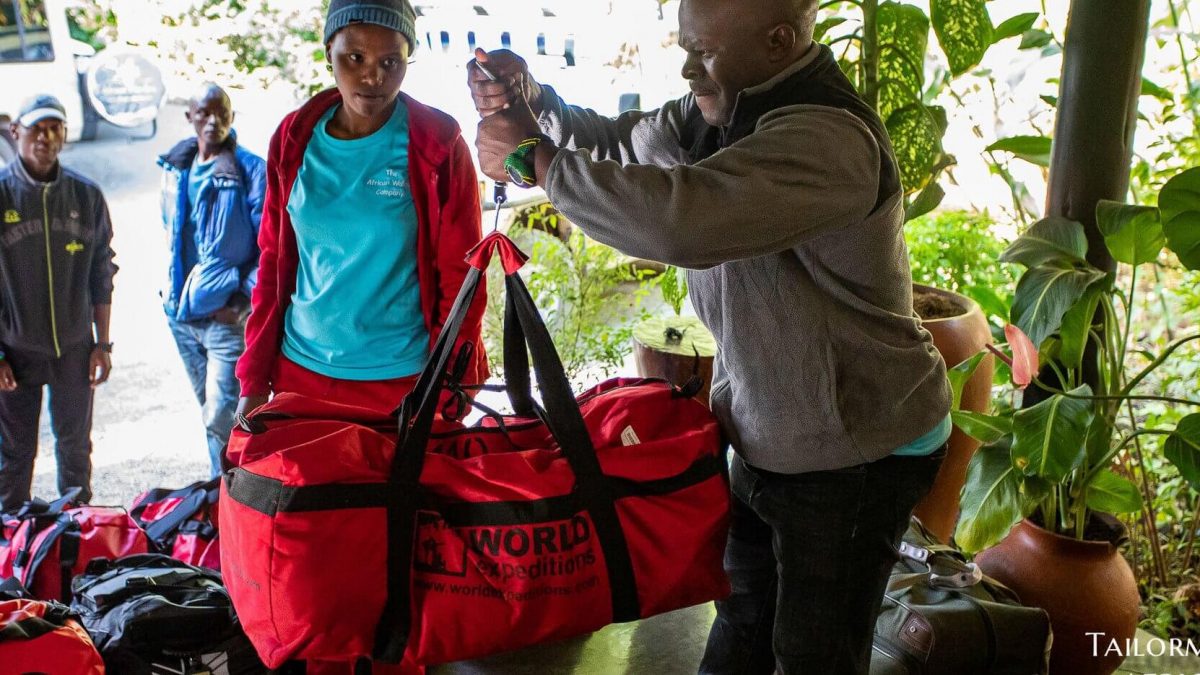
Altitude Sickness on Mount Kilimanjaro
February 23, 2022
The African Walking Company
February 24, 2022
Altitude Sickness on Mount Kilimanjaro
February 23, 2022
The African Walking Company
February 24, 2022
There are several routes up Kilimanjaro, but our favourite route is the Lemosho Route. The more time you have to acclimatise the better your chances of summiting Kili.
Choosing the right route on Kilimanjaro is absolutely essential. You have to climb Kilimanjaro by one of several pre-determined routes. The duration of a trek can range from five to twelve or more nights. Almost all of our treks involve either 5, 6, 7 or 8 nights on the mountain. We consider 4-night treks to be too dangerous, whilst longer treks tend to be rare and unnecessary.
If you are reasonably fit and confident about your ability to endure the rigours of camping out on the mountain for a week, then you should go for one of the longer 7 or 8-night treks, which offer better altitude acclimatisation and scenic variety. You will need at least one night in a lodge either side of the trek, so it usually adds up to between seven and ten nights in the country, before you have even considered adding a Tanzania safari, Zanzibar beach holiday or other elements.
All of the routes that we use involve camping each night. One route that we do not offer, the Marangu route, actually has huts at each overnight location, but it is in a really poor & unhealthy condition, populated by wide-eyed, non-mountain folk and shambolic budget operators. The huts are actually less attractive than tents anyway.
The Best Route to Climb Mount Kilimanjaro FAQs
Most of the Kilimanjaro trails used on our mountain treks are well-defined and of good quality. Paths in moorland and alpine desert can become difficult to follow in foggy conditions and it is essential that all trekkers are in permanent contact with their guides. Some of the forest sections are often slippery, necessitating the use of walking poles and gaiters. The moorland paths can also be very wet and sometimes boggy.
There are no sections on normal routes which require technical climbing skills. There are a couple of sections which require a reasonable head for heights and a limited amount of scrambling, notably the Barranco Wall on the Shira and Lemosho routes, plus some small sections of the summit ascent as you reach the crater rim. The summit days are almost exclusively on loose scree but no technical skills are required. Coming down from the summit is made easier by scree-running, but this skill is not essential.
Walking poles will again be needed for this section. For parts of the year the summit approaches on the mountain may be covered with snow and sometimes ice, but no special equipment is needed to walk on it. Dangerous ice conditions are only normally encountered on the more technical routes such as those which ascend via the Western Breach, but we do not operate on those routes.
The Lemosho Route is a non-technical 7-night / 8-day group trek or private trek which is arguably the best option on the mountain, having excellent altitude acclimatisation, an extraordinary summit success rate of 95% and excellent traffic avoidance, especially for departures on Mondays or Tuesdays. The price range is USD2800 - 4850 depending on the number of trekkers and whether or not it is a group or a private climb. Click here to view our detailed itinerary on the Lemosho 8-day trek.
SHIRA 8-DAY TREKThe Shira Route is a non-technical 7-night / 8-day group trek or private trek and one of the most popular options. We use a very unusual variant on the routing, by which it manages to avoid major traffic for almost the whole of the first five days. It has an extraordinary summit success rate of over 90% and exceptional traffic avoidance, especially for departures on Mondays, Tuesdays and Wednesdays. The price range is USD2500 - 4400 depending on the number of trekkers and whether or not it is a group or a private climb.
RONGAI 6-DAY TREKThe Rongai Route is a non-technical 5-night / 6-day group trek or private trek, with a possible additional extra day added in for altitude acclimatisation. A lot of companies will try to sell Rongai as the 'easiest' option to get up the mountain but it is simply not true. Arguably from the point of view that there are fewer kilometres to walk in total but that’s it. The climb is virtually ascending all the time with few flat or downhill sections, meaning you break the golden rule on the mountain of climb high sleep low and the summit from Kibo to Uhuru via Gilman’s point has you at over 5500 meters for over two and a half hours at a minimum which is an awfully long time to be at that height. It has a very good summit success rate of 89% regardless simply because of our climb teams guides. The price range is USD1900 - 3950 depending on the number of trekkers and whether or not it is a group or a private climb.





























